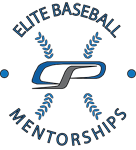
Get with the Program: Strategies for Individualizing Baseball Development
Today’s guest post comes from physical therapist Eric Schoenberg, who is an integral part of the Elite Baseball Mentorships team. Enjoy! -EC
Regardless of your profession with respect to the baseball world, chances are that you spend a good portion of your days writing programs. Whether it is a home exercise program for a physical therapist, a training program for the strength and conditioning specialist, a throwing program for the pitching instructor, or a practice plan for a head coach, the quality of your programs can differentiate you from your competition. As opposed to writing a daily “workout,” a detailed, individualized program gives the athlete structure and sets expectations similar to a curriculum in education.
Each time we host an Elite Baseball Mentorship, the topic of programming comes up in our wrap-up roundtable discussion. As professionals, our job is to add value to our services and give our athletes a competitive advantage over their peers. A big way in which we can do this is by writing great programs for our athletes. It should be noted that writing such detailed and specific programs takes a lot of time and effort, but the athletes that we work with deserve nothing less. A “one size fits all” program with empty promises may sell well online, but most are a disservice to the athlete. This article will outline examples of different programs that we write on a daily basis.
There are many ways to subdivide programs to suit the needs of your athletes. For the purposes of this article, I’ve divided programs into three different categories: Temporal (length of program), Age, and Time of year/Season.
Within each category, athletes are divided into into three sub-categories: Lax, “Middle of the road”, and Stiff. Determining an athlete’s degree of laxity or stiffness is critical to determine whether an athlete needs to focus on mobility (“loosen up”) or stability (“tighten up”).
In addition, it serves as a more logical way to group athletes together when an individualized program is not possible based on time, space, and resources – most notably in the high school or college team settings.
Let’s take a look at each category, starting with temporal, and hit on some different points worth considering when designing programs for your athletes.
Daily programming:
• Practice vs. Gameday
• Prehab/Rehab
• Pre-game warm-up
• Pre-throwing
• Throwing (Long toss, bullpen, in-game)
• In-game (between innings, reliever warm-up)
• Nutrition
• Post-game/Recovery
Weekly:
• Strength and Conditioning – frequency of strength and mobility sessions
• Rehab/Physical Therapy treatments (includes soft tissue work)
• Home exercise programs
• Throwing (5-day, 7-day, Reliever)
• Recovery work
Monthly/Season:
• Early season vs. late season (adaptive changes will require change in programming)
Year:
• Pre-season, in-season, post-season, time off
Next, age must be appreciated when considering program design. There are major differences between these age groups in terms of laxity, injury history, injury predisposition, activity tolerance, recovery time, and a host of other factors that must be considered when programming for your athletes. As an athlete gets older, the number of games played in a season dramatically increases and must be accounted for in their programs. The table below illustrates a breakdown of the age category:
Lastly, we need to pay attention to season when designing programs. An interesting study by Posner et al, found that MLB injuries were 10x more likely to occur in April than September. It is critical to appreciate that exercise selection needs to change based on season out of respect for throwing volume. In addition, the importance of adaptive changes such as decreased (or increased) ROM, pain, fatigue, weight loss, among others must be appreciated. Also, competing demands such as multiple sports in season, travel, schoolwork, and family commitments need to be taken into consideration as we create programs for our athletes.
Other considerations for varying volume, duration, and intensity in your programs include:
• Position (pitcher, catcher, IF, OF)
• History of injury in past year
• Multi-Sport vs. Early Specialized (include multi-sports in same season – high school athlete)
• Geography: Athletes from the Northeast will have a shorter competitive season with less games vs. their southern counterparts.
In conclusion, once you determine an athlete’s degree of laxity and define time, age, and seasonal considerations, you can use these templates in combination to help organize your programming and become more efficient.
For example:
➢ A daily in-season program for a lax 17 year old left-handed pitcher (and 3-sport high school athlete) with a history of medial elbow pain.
It is important to appreciate that this program design will vary greatly from:
➢ A weekly off-season program for a stiff 30 year old RHP (big leaguer) with a medical history of 2 shoulder surgeries and currently experiencing left knee pain.
If you found this information helpful in organizing your thoughts when it comes to managing the baseball players with whom you work, we encourage you to sign up for one of our upcoming Elite Baseball Mentorships. We have events in both October and November, and you won’t find a more intensive baseball educational course.







